It’s springtime in the Rockies. Nearly all the birds are back from their vacays on the Mexican Riviera, and our home place is green and teeming with the sounds and scents of life. Killdeers call and bait relentlessly trying to lure cows and calves from their camouflage nests (they do) and Sandhill crane calls echo from the river bottoms with a pterodactyl-like rattle in the dusk of evening. Grass has got the green color of the season worked out, but it has been too cold at night to grow much, so we still feed our daily hay ration to the beeves. It’s the best hay of the year, because it’s got to compete with the temptation of wispy and short green grass.
I was up before sunrise today looking up at the mountains. It’s still winter up there. This morning and nearly every morning over the past month, there is a mantle of fresh white on the high ridges; I can tell because the trees are caked with fresh frosting. I was grateful we didn’t have to live up there. But as I drove over a nearby pass, I was reminded that some residents of the high country wouldn’t have it any other way.
The kids and I went over nearby Banner Summit several days ago through a white walled canyon carved through the snowpack by snowplows. The vertical snow walls were (and are) so tall that daughter Linnaea encountered a trapped wolverine on the dry pavement of the highway a few weeks earlier. For those of you who don’t know, the wolverine is the extremely rare terror of the high country (I’ve never had the pleasure of meeting one). They say a wolverine will win virtually any fight with even much larger predators just from sheer tenacity and ferocity. Linnaea wisely stayed in her Subaru, and slowed so the striped apparition could climb the vertical snow wall and disappear into the dark fire-swamp like forest that it called home.
The kids and I calculated the amount of snow that had fallen in feet over the winter (and still falling as we drove over the same pass). The number we came up with: 37 feet. It had all compacted down by the pressure of its own weight to a mere 8 feet, but that 8 feet holds a huge amount of water in the snowpack that must still melt and come down the Salmon River when summertime hits. It’s great news for us, as we’ve seen a slow deterioration in the water table up on our summer range. Springs that were dependable sources of water for 50 years are drying up, and a snowpack like this will help recharge some of those groundwater springs and make the grass more vigorous than ever.
You pay attention to these things when you are so tied in your life’s work to those humble blades of green.
I was talking to another organic grass fed producer friend of mine in Montana yesterday. Mark ranches around 2500 feet elevation up near the Canadian border, and his more northern latitude brings him weather quite like ours at our 5200 feet elevation. He patiently awaits the arrival of lush green as well. We both—to our foundational roots–are tied to the grass. We’ve created a business that hinges upon one of the simplest of plants in nature. Nothing clouds that relationship. If we don’t have grass, we don’t exist.
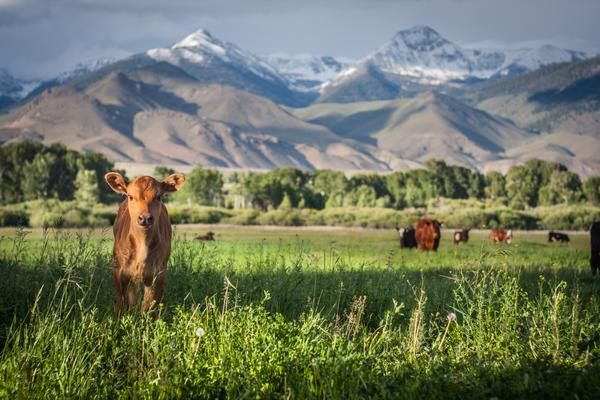
Mark and I can converse for hours about swards of grass. Conversations drift through the topics of how to maximize this species or another, what soils this grass does well on, and what the true native species of our slightly different ecosystems are, and if they are different, how we can restore them. Or maybe we don’t need to, because the grazers have changed to a slight degree. Bison no longer exist in either of our systems; they’ve been replaced by our Angus cattle. But both wild bison bovines and domestic angus bovines are linked in the lineage of ruminants that carry with them in their guts an elegant fermentation factory that converts cellulose and lignin rich grass into energy (few other animals can digest it).
For us here in central Idaho, the species composition is likely unchanged on our grazing ranges. One indication of that is the existence of a number of extremely rare plants that grow in our mountain walled habitat of these Central Idaho Mountains. Those peaks that surround us act as sort of a fortress, impeding the spread of new species into our area, and keeping ours in. It’s what has kept many of our ecosystems fairly pristine. This area wasn’t homesteaded until the late 1800s, and then, only in the valleys. This short history of European settlement and the emphasis on ranching rather than row-cropping also has reduced impacts on native plant species such as the Salmon River Wildrye.
Originally described from plants found along the Salmon River, the Salmon River wildrye was thought to only occur in this limited area in central Idaho growing with a number of found-nowhere-else-in-the-world plants on our unique soils, called the “Challis volcanics.” The most recent taxonomic treatment puts our local wildrye with somewhat similar ones found in northern Utah and Nevada (taxonomist are called lumpers and splitters, depending on what they tend to do in their taxonomic treatment of plants- I only know this because I live with a plant person).
Regardless of taxonomic predilection, the grass is rare, and in Idaho only occurs in these few canyons in and around our summer grazing range. The stunning grass dominates hillsides along the river breaks and creates a waving carpet of green over the landscape. At its base is a cluster of velvety and very palatable and soft leaves. Our beeves love it, and relish the flavorful blades of this species as we cruise the cattle through the broken hills of the breaks in the spring and early summer.
With our constant movement over the landscape, we herd the beeves like bison move, and only about 10% of the plants get grazed by us. We leave the rest for the wild elk and mule deer raising babies of their own at that time of year. This also leaves enough grass to go to seed to further strengthen its hold on the ashy volcanic soils.
The first time that I as a human imbibed some of the grass was only several years ago. I wanted to see why the beeves enjoyed it. I grabbed several seed heads and chewed on them as I sat in the shade of my mare, Ginger, watching the beeves graze their way across the mountainside. She was happily grazing as well.
I found that wildrye is nutty and very sweet, with a touch of mineralized flavor. It’s pure and sweet across the palate, like maple syrup. Even the stem bases are sweet. But there was more to learn, and it was in a conversation with Ted that I learned a bit more. He’s a mid-sixtyish gent and neighbor of mine who had been riding in those Salmon River breaks for years, ever since he could climb aboard a horse.
Ted: “You gonna turn those cattle out on that velvetgrass soon?”
“Velvetgrass?” I looked up at him as I pulled strings from a hay bale I was opening. “What’s velvetgrass?”
“Well you know. It’s that grass that lives along the Salmon River. With the velvety leaves.”
I knew he was describing Salmon River Wildrye. There was nothing else as “velvety.” I nodded.
He started in again. “You know, I always really liked that grass. Cattle seemed to really like it, and the dangdest thing about it was that on some of those springtime days where the sun would get hot, well those old girls wouldn’t come down to water. They’d just stay up on those hills until dark.” He nodded up to the hills above us, up Lawson Creek, beyond Alderspring where I knew some stands of the grass colonized these hills at the edge of wildrye’s tiny global range of distribution.
“So after a few days, I went up there to see what was going on. They were grazing the velvetgrass, and I checked out the leaves, but they weren’t what you could call succulent. But the thing I did notice”¦” He looked me in the eye and pointed a finger at me, emphasizing his next thought. “”¦was that there were a whole bunch of dewdrops from the last night’s dew still tied up in the velvet. There was enough water tied up in that grass that that ‘ol girl didn’t have to come down to drink. Yep. That velvet just took care of ’em.”
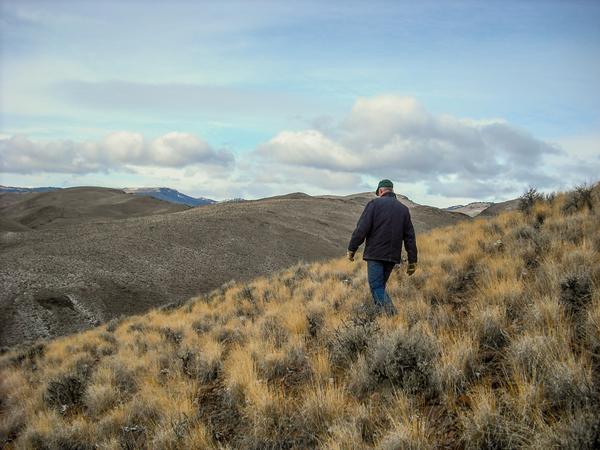
And the little that we know about velvetgrass just became an increment more than a little. The interesting thing to me was that when Ted grazed those cows up there, they had more than 5 times the amount of cows I did, and yet the velvetgrass prevailed. I asked Caryl, my onsite PhD plant lover, about it. She likes graminoids, a broad term for grasses, sedges, rushes and so on- things most of us just recognize as “grass”- enjoying the subtle differences that separate species. Caryl believes it did well because that historic grazing use occurred during the late fall or early spring, when the plant was resistant to grazing. It made sense in the prehistoric context as well: bison were always traveling, and would have grazed the low elevation grasses early in the spring.
Caryl went on about the current knowledge base on velvetgrass, or wildrye: “There isn’t a whole lot known about the plant because it is so uncommon.” She smiled, I think because she likes it when we arrogant-as-a-species humans don’t know everything about everything. In fact, we know virtually nothing about this something, velvetgrass. Ted knew more than nearly anyone about it. Perhaps there are secrets akin to cures for chronic disease and cancers tied up in this lovely grass. Who knows.
But there is a demographic that has a pretty deep understanding of this velvety wildrye: the cows. Yep. Those same “stupid” bovines we stack in feedlots like a cordwood commodity and feed ground up junk to. The cows know more than we do about some things, especially grass, because they, like us ranchers/graziers, depend on it. Those knowing bovines judiciously harvest the likes of velvetgrass, selecting a varied diet of native plants from the buffet our rangeland plants offer, adding nutrition to their plate and, I believe, ultimately also to yours.
I’m taken back in my mind to a quiet May evening, bone tired from horseback all day, sitting in my saddle on a rocky point aboard buckskin mare Ginger, quietly watching the beeves leisurely walk through belly deep velvetgrass in a high basin tucked into the Salmon River breaks. An evening breeze makes the grass wave like ocean swells, but there isn’t enough wind to make a sound. All I can hear was contented beeves wrapping tongue around a tall clump of grass every now and again and then taking a few steps to another plant.
In my mind, I remember how the setting sun had turned the hills to gold that reached up from the dark shadowed Salmon River canyon and rose ever higher to forests and then beyond to snowfields just beginning to show the alpen glow of an early summer dusk.
Behind the cattle were footprints, and still waving stands of wildrye. They leave an occasional bite mark in the perennial sward of ocean waving stems, and only footprints underneath. Within a few weeks, there would be no trace that we had been here, and we likely wouldn’t be back to this spot for several years. Velvetgrass will continue after grazing to put up new shoots and seedling as it had for years in adaptation to infrequently grazing and always moving bison.
And once again, I was struck with the beautiful elegance found in bovine harvest of wild grasses that had gone on for millennia in these mountains. Grazed first by a bovine called bison; now, grazed by our domestic bovine that we, through herding, mimic the same patterns that the bison followed. This simple thing called grass is and has been foundation for life on this part of the earth; an entire food chain was founded on it. If we steward it, as the bison did, that simple elegance can continue in this part of our wild heritage. Thanks for being a part of it, and for partaking as partners in the husbandry harvest and sustaining of velvetgrass, one of the Earth’s rare gifts.

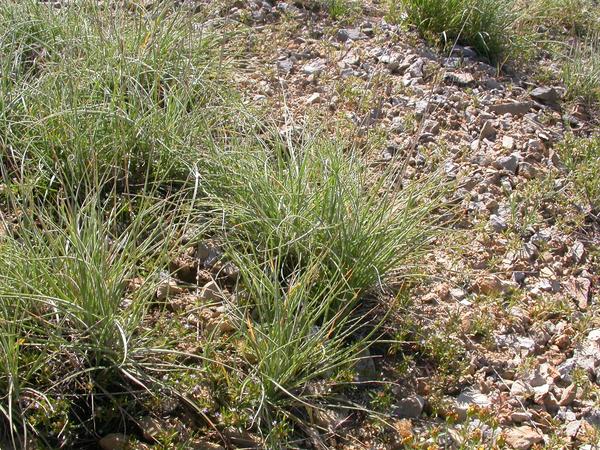
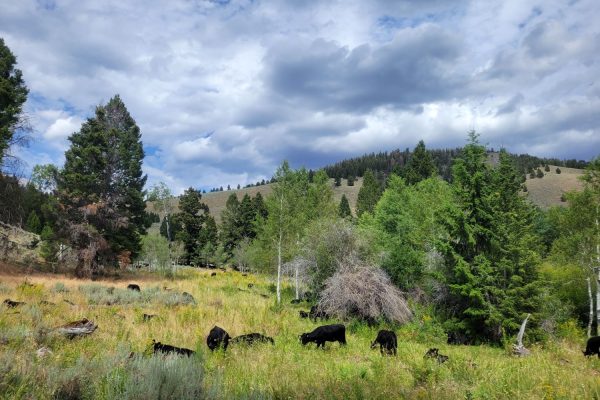
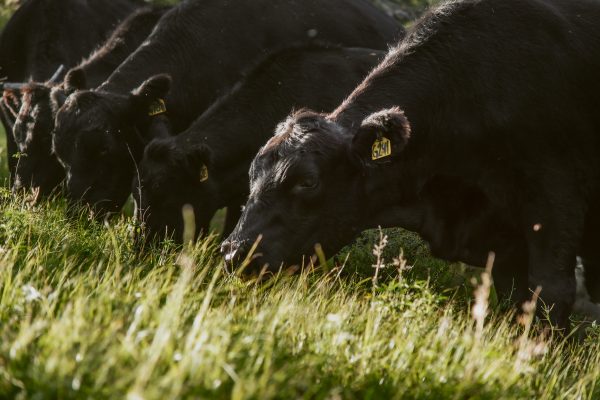

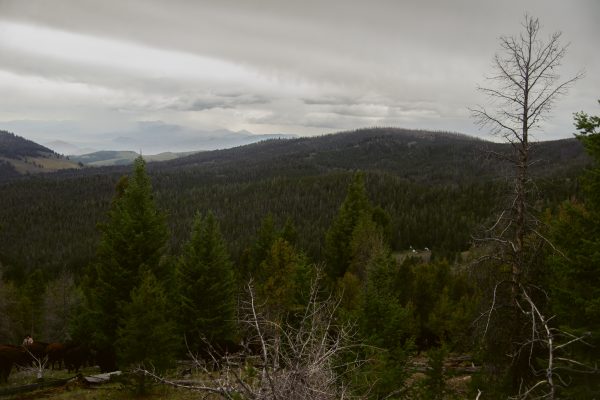


Natalie
“She smiled, I think because she likes it when we arrogant-as-a-species humans don’t know everything about everything. In fact, we know virtually nothing about this something, velvetgrass.”
I’m glad you cherish your velvetgrass and have taken the time to observe its qualities.
This is something I often think about: how little we know and how much we think that we know, as we carry on disrespecting and damaging, oftentimes for nonsensical reasons, the world that gives us life.
How many things that we believed, were eventually disproved, and how many more will be disproved in the future?
The more that we learn, the more we may realize how little we know.